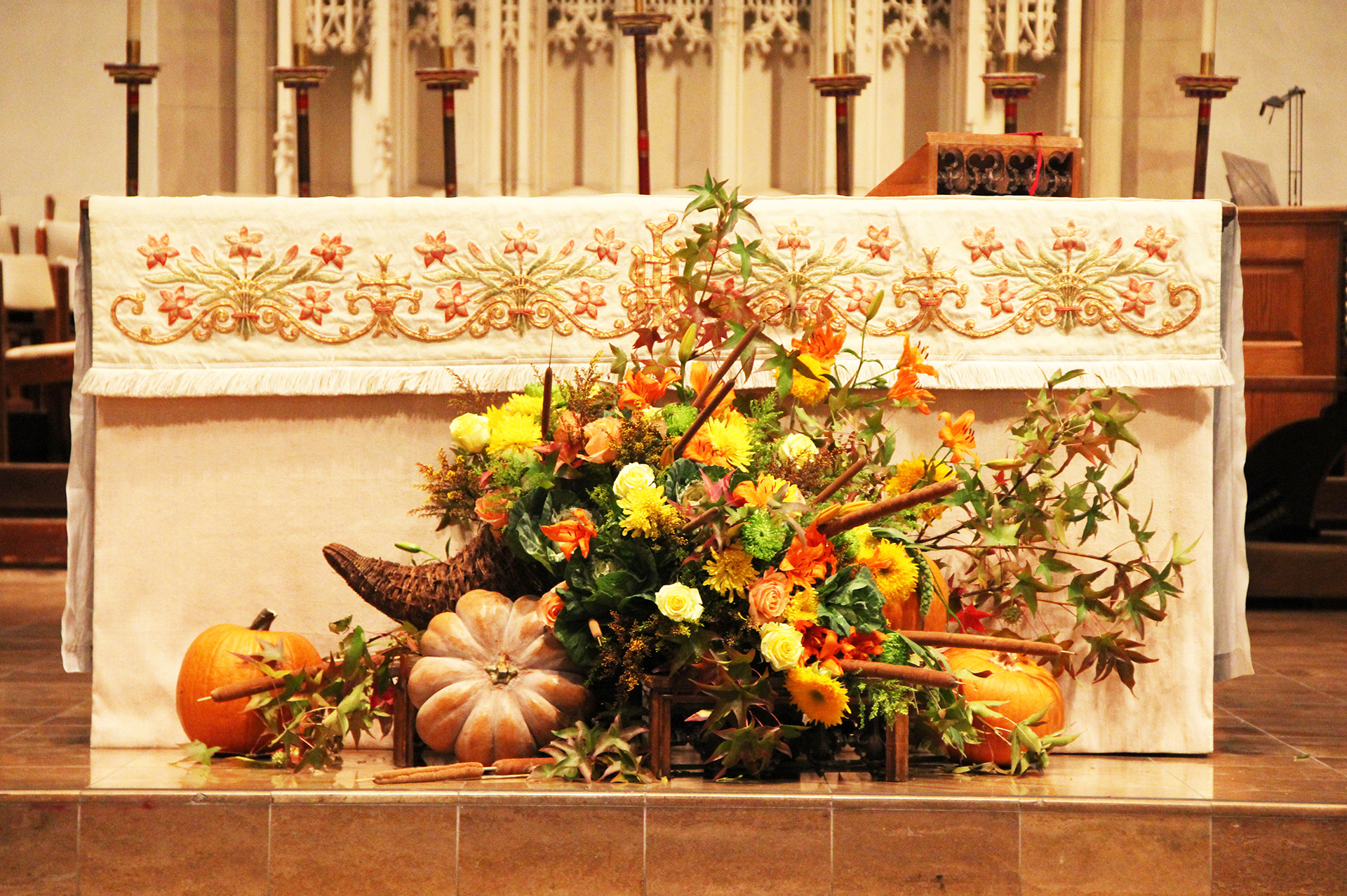Transgender Awareness Week is… “a time for transgender people and their allies to take action and bring attention to the community by educating the public and advancing advocacy around the issues of prejudice, discrimination, and violence that transgender people face.”
As part of our participation in that wider work and witness, in November 2018 our Studio ASC podcast focused on the transgender community and included this essay by parishioner Hannah Earnshaw … which we’ve entitled “Pronouns 101.”
You can listen here (and subscribe to Studio ASC wherever you get your podcasts!) and read their essay below.
And now … here’s Hannah … with everything you ever wanted to know about pronouns.
=======
My name is Hannah, and my pronouns are they/them.
If you’ve come to All Saints recently, you might have heard something similar when our Rector, Mike Kinman, introduces himself by stating his name and that his pronouns are he/him. Maybe that sounds a little funny to you. Isn’t that stating the obvious? What is he talking about, and why is it important?
First, let’s make sure we’re on the same page. What even is a pronoun, anyway? In this context, we’re talking specifically about third-person personal pronouns—the words that we use to talk about other people in place of their name. So if we’re talking about a man, we might talk about how he is in a choir, and his singing voice is amazing, have you heard him? Or if we’re talking about a woman, how she loves animals, and her dog is really friendly and is always jumping up to her. We also use the words ‘they’ and ‘them’ to talk about groups of people, although those words have a bunch of different uses I’ll go into a bit more in a minute.
But why does Mike declare the pronouns that we should use for him? Surely it’s pretty easy for us to figure that out ourselves?
What Mike is doing is voluntarily taking part in something that transgender people find ourselves having to do all the time—transgender people being those who are a different gender from the one they were assumed to be when they were born based on their physical characteristics. While for many transgender people the ideal situation is for others to instantly recognise us as the gender we are and use the correct language from the outset, a lot of the time this is not always possible, and we need to tell people what language to use.
Perhaps someone has just started to transition away from the gender they were assigned at birth, and need to tell the people they know to use different language for them from now on. Perhaps someone’s appearance is ambiguous in a way that causes people to sometimes guess their gender wrong. This can happen to cisgender people too (that is, people who would describe themselves as the gender they were assigned at birth), and is particularly a problem when we associate physical traits too strongly with one gender or another. Sometimes, people will deliberately use the wrong language if they know or even suspect that someone is transgender, which is just plain abusive. Or perhaps someone needs to communicate that they are a gender other than male or female, and that they need other people to use different language for them.
Here’s an example: right at the start when I introduced myself, I said that my pronouns are they/them. That’s because I’m agender. That’s a non-binary gender, a gender that is not wholly male or female. For me, being agender means that I don’t have an internal sense of gender at all. I feel very uncomfortable and out-of-place in single-gender environments and people using male or female language to describe me just feels incorrect on a very deep and fundamental level. For that reason, I ask people to use the pronouns they/them to talk about me instead of he/him or she/her.
Your first reaction might be to think, that feels weird to me – ‘they’ is a plural! And indeed, we do often use it to talk about multiple people at once. However, ‘they’ is also grammatically correct used as a singular. Usually, this is in cases when you’re talking about someone whose gender you don’t know yet, or a hypothetical person whose gender is irrelevant. ‘They’ has been used like this since the 13th century, with somewhat of a hiccup in the 18th and 19th centuries when people decided that the pronoun ‘he’ should be used when talking in the generic sense—thankfully we’ve mostly realised that was a bad idea and stopped doing that. In most cases, you’ll use the singular they all the time without even thinking about it: “Do you know who that was at the door? I didn’t see their face. Did you see them? Oh look, they left a parcel!” In fact, I’ve been using ‘they’ all the way through this podcast, and you may not have even noticed. When you talk about a person you know who uses they/them pronouns, it works in exactly the same way. Simple, right?
Because the words they/them/their are already in the English vocabulary, many non-binary people will ask you to use them, because that’s just easier for everybody—it’s words you already know how to use. However, some non-binary people (or people who are still figuring things out for a bit) might ask you to use just their name and avoid pronouns altogether. Still others might ask you to use neopronouns for them instead. These are singular pronouns that have been invented specifically to be non-gender-specific, or to indicate a non-binary gender. They’re not a new invention—though they’re not widely known, neopronouns in English have been around in some form or another since the 1850s. However, several sets of them exist, and there is not one universally agreed upon set yet, so you need to go by whatever an individual requests. Some examples are e/em, xe/xem, ne/nym, or per/pers.
One set of neopronouns that I like is ze/hir (spelled ze and hir). You use them as follows: “this is Hannah—ze is an astronomer, and hir research involves space telescopes. I’d like to introduce you to hir.” That’s not so bad, is it? If you’d like to practice using ze/hir instead of they/them, I’d be very happy for you to do so! For me. Just remember that other non-binary people will have different requests.
Also, I want to take a moment at this point to mention that I’m only talking about the English language here. If you speak Spanish, I also recommend looking into the efforts happening now to create gender-neutral language in Spanish. The same is of course true of lots of other languages as well, and it’s really worth the research to find out.
This whole pronoun thing may sound a bit complicated at first, but think about it like this. When you first meet someone, you usually need to try to remember several things about them for next time: their name and face, and maybe also the context in which you met them and something you have in common. Now, I’m bad with names, so this might take me a few meetings to get right, but if I make an effort to remember, and practice if necessary, I’ll usually have it down fine by the third or fourth meeting. (Sorry.)
Pronouns are exactly the same—it might take a little practice and few times to get right, but as long as you make an effort to remember, it won’t take too long to become habit. And if you do get it wrong, quickly correcting yourself is all that’s needed to let us know it was a mistake. Don’t be scared of it. Sometimes I will remind people if they slip up, but generally having to correct people’s language can make a trans person feel very vulnerable and self-conscious, and sometimes conversation just moves too fast for us to say anything about it at the time, so try not to rely on people doing that for you. If you hear someone else getting it wrong, maybe take the initiative to gently correct them yourself—that takes the burden off the trans person, especially when they’re not around to do it themselves.
It’s always good to try to be mindful of pronouns, even when someone hasn’t explicitly told you them yet. If someone is wearing a name tag, they may write their pronouns on it. This is a really big clue, so wherever you see name tags—or pins, or badges—look out for pronouns as well. Sometimes, people might make a particular effort to present themselves as a certain gender—if you are presented with obviously deliberate visual cues, it’s usually okay to take those cues, but bear in mind that for a lot of people, and non-binary folks in particular, there’s no one real way to just ‘look’ like their gender—you have to listen out for what they tell you or how their friends speak about them.
And if you’re still not sure, it’s often fine to discreetly ask someone, “Excuse me, what pronouns should I use for you?” although do be mindful of whether or not you’re in a safe space for a conversation like that first, and whether the person you’re asking is going to be comfortable with such a question. Exercise caution, and when you really don’t know, feel free to admit that you’re guessing or be a bit vague. Not everyone knows everything, and that’s okay.
The thing is, when people make the effort to understand pronouns and use the correct language to talk about transgender people, it helps us to feel safe and welcome in a world that is still very hostile to our existence. That’s why Mike stating his pronouns on a Sunday morning is encouraging for me to hear. It does three things:
- First, when cisgender people offer their pronouns and normalise that practice, it means that a transgender person can do that as well without having to explicitly out themselves as trans. A trans man can say, “my pronouns are he/him”, and it’s not about him being trans any more—he’s just saying he’s a man, like Mike is. No big deal. You’ll see this often in email signatures and online profiles, and it’s a really simple thing to add to help make it a common practice.
- Second, it acts as a reminder to the community that we should be conscious of gender, and the assumptions that we make around it. Maybe we pay a lot of attention to how high someone’s voice is, how tall they are, what their haircut’s like, or whether or not they have facial hair, when instead we should pay more attention to how they express themselves and what they tell us and ask of us.
- And finally, it’s an act of love and solidarity to the transgender community. It tells us, “I get it. I acknowledge that this is something that you have to do all the time, and I’m prepared to do it too. And I want you to know that, in this space, when you tell someone your pronouns, you will be listened to, you will be understood, you will be respected, and your requests will be honoured.”
So the next time you hear Mike tell us that his pronouns are he/him, don’t laugh. Instead, take a moment to think about how you can help All Saints, or wherever you live and work, to become that safe space for transgender people. We really need it.
And I can tell you, being correctly acknowledged as the beautiful, complicated child of God that I truly am—that’s the best feeling in the world.



